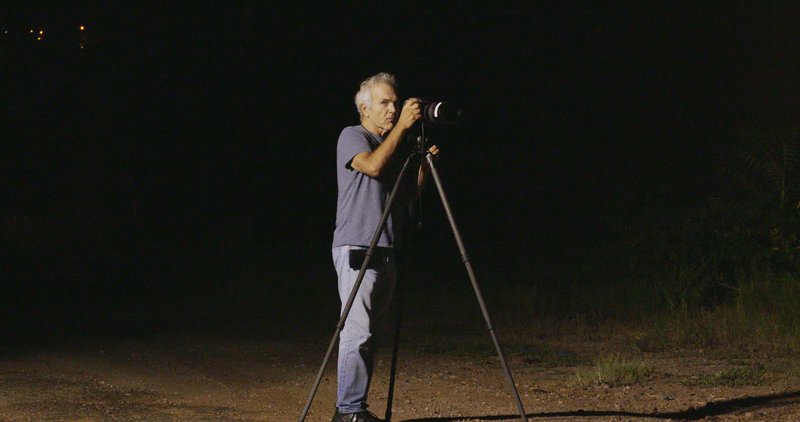RICHARD MISRACH:
I decided to photograph in New Orleans after Katrina because I had been watching what was going on for about a month, like everybody else, just as the whole drama was unfolding.
This is the kind of scale where you could drive for days and not see another human being. In front of me, behind me, just destroyed. And no people.
For the first 3 weeks, I saw 3 National Guardsmen. That was it. It was—it was like a post-apocalyptic movie.
And along with the big camera, I took a small pocket camera, a 4 mega-pixel pocket camera. And that was just strictly to make notes about where I was, streets that were down— you know, street signs that were down, maybe places to go back and shoot. I never thought I would make serious pictures with that.
I ended up making about 2,000 photographs with the pocket camera, and realized that there was a lot of amazing pictures there that were very raw, and it seemed very appropriate to what I was looking at.
And within those 2,000 photographs, there was a subset of photographs of people writing messages on their walls with spray paint. And they wrote ’em on their homes, on their cars, on trees.
I realized that there was a complete narrative about what was going on in Katrina, in their words. Not the photographer’s words, not all the editorial views that we’ve seen all along, but their words. And I felt it was really important to get that out.
I went through all the pictures, I printed them like crazy fast, laid them out. Then these subthemes within the larger narrative came out and I knew there was a book that needed to come out.
The book evolves in a very natural narrative, from different kinds of motions of fear, of anger, of hope. Anger at politicians, anger at the insurance companies, and then even ends on an existential note, where people go, “Destroy this memory,” or— or “What now?,” or “Sorry,” on the side of a car. You don’t know if it’s God speaking or people— you know, who they’re writing to. It’s really quite amazing.
And one of the things that really profoundly moved me—and I think it’s the key to the photographs, why they’re not sort of too depressing—is that— the humor that people f— found.
So you’d see all these messages, like— like, you know, primitive text messaging, right? ’Cause they’re done with spray paint.
A lot of the humor, a lot of the jokes—like “Elvis has left the house,” or things like that—you’d see that in the Mississippi Gulf Coast, you’d see it in the Lower Ninth Ward in New Orleans. You’d see the same jokes, even.
Or the reactions, like “Katrina, you bitch.” That was everywhere, you know, sort of collective consciousness that rose through spray paint. I— I mean, I— I just don’t know why everybody had the wherewithal to just start sending messages on their— on their homes.
I don’t know where that came from, I mean, given what people suffered there, but it showed a— a resilience that was extraordinary and very uplifting and I— I think really poignant.

